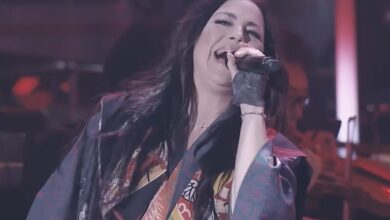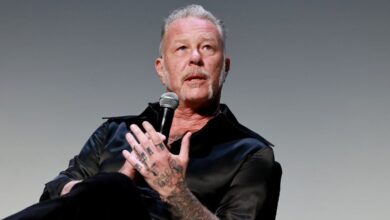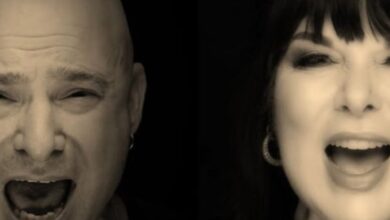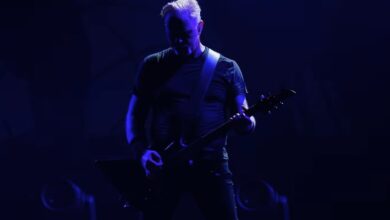Metallica Stilled Fifty Thousand Hearts with a Soul-Stirring “Nothing Else Matters” in Melbourne 2025
Marvel Stadium wasn’t just hosting another big rock show on November 8, 2025 – it felt like the entire west side of Melbourne had been drafted into Metallica’s orbit. By late afternoon, trains were dumping waves of black-shirted fans at Southern Cross Station, and Bourke Street became a slow-moving river of battle jackets, faded Justice tees, and brand-new 72 Seasons merch. Inside the venue’s concrete bowl, more than 50,000 people filtered toward their seats and the floor, drawn toward the hulking M72 stage setup rising out of the stadium like some landed spacecraft.
This wasn’t just any tour date – this was the long-promised Australian stop of the M72 World Tour, a run that has already been called “record-breaking” and “life-affirming” as it’s roared through Europe and North America. The Australian leg of the tour included huge open-air venues and represented the band’s first dedicated stadium run down under in years.
Long before James Hetfield played a single note, the evening had the feel of a mini-festival. Suicidal Tendencies brought skate-punk chaos to the big stage, Mike Muir pacing like a caged animal and whipping the early crowd into circle pits that rippled even through the lower stands. Evanescence followed with a set that leaned into drama and melody, Amy Lee’s voice cutting across the open roof like a siren. For younger fans, it was a dream double-bill; for the old guard, it felt like Metallica had hand-picked openers who understood both the aggression and the emotion at the heart of heavy music.
Around the stadium, the M72 machine hummed along. At merchandise stands, fans grabbed the Melbourne-exclusive tour poster and the local splatter-vinyl edition of 72 Seasons, items promoted all week at the band’s pop-up shop over in Collingwood. Others compared notes on the blood drive Metallica had set up with Australian Red Cross Lifeblood, swapping stories of donating earlier in the week in exchange for the chance at limited merch. It was classic modern Metallica: a mega-production that still made room for fan-club contests, Snake Pit lotteries, and charity initiatives woven into the chaos.
As dusk fell, Marvel Stadium’s roof lights dimmed, and the familiar crackle of AC/DC’s “It’s a Long Way to the Top (If You Wanna Rock ’n’ Roll)” boomed over the PA—a nod to local heroes and the unofficial pre-game anthem of this tour. The giant in-the-round stage glowed faintly at the center, flanked by eight looming video towers. When Ennio Morricone’s “The Ecstasy of Gold” followed, the response was Pavlovian: 50,000 voices roared, phones shot into the air, and every aisle became a sprint lane as late-comers scrambled to their spots. The air felt electric, thick with pyrotechnic residue from previous cities and decades of expectation.
Metallica hit like a freight train out of the gate. The opening stretch crashed through old-school thrash and stadium-built anthems—“Creeping Death,” “For Whom the Bell Tolls,” maybe a surprise deep cut or two—as the band used the circular stage like a racetrack. Hetfield prowled between mic stations, Lars Ulrich’s kit spun on its axis, and Kirk Hammett and Robert Trujillo took turns working every corner of the Snake Pit, the famous fan section carved into the middle like the eye of the storm. From high in the stands, the entire floor moved in waves, a living sea orbiting the four musicians.
The visual design of M72 hit different inside Marvel’s dome. Instead of a single end-stage, the band’s playground sat dead center, with towering screens broadcasting close-ups and abstract visuals in every direction. At times, the towers showed stark black-and-white shots of the band, giving the night a documentary feel; at others, they flashed fire, circuitry, or album-themed graphics timed to each song. It wasn’t about drowning the music in gimmicks—it was about making sure the kid in the very last row could see every pick scrape and snarl as clearly as someone pressed against the rail.
One of the most unexpected local high points arrived in the middle of the set, when the spotlight shifted to the Kirk-and-Rob “doodle” segment that has become a signature of recent shows. In Melbourne, the pair tipped their hats to home-grown punk heroes The Living End, bashing through a rough-and-ready cover of “Prisoner of Society.” The stadium reacted instantly, thousands of voices shouting the chorus while Hammett grinned and Trujillo stomped around the stage, clearly loving the chance to jam something uniquely Australian into the Metallica canon for one night only.
By the time the show swung into its second half, the mood inside Marvel had shifted from feral excitement to something more expansive and emotional. The band stacked modern 72 Seasons material alongside Black Album staples and deep cuts, but it was the slow-burn build toward “Nothing Else Matters” that everyone could sense coming. Between songs, Hetfield paused to talk about the band’s long history with Australia, about growing older with their fans, and about what it means to stand in a stadium on the other side of the world and feel like you’re home.
When the first clean notes of “Nothing Else Matters” finally rang out, all the fire and fury of the earlier set seemed to freeze in mid-air. Hetfield stepped alone to one of the mic stations, guitar cradled against his chest, as the cameras zoomed in to project his face story-tall on every screen. The reaction was immediate: conversations stopped, beers were lowered, and tens of thousands of tiny phone lights flickered on, transforming the stadium into a galaxy. For a band famous for riffs and speed, the quiet felt just as overwhelming as any flamethrower.
There was a particular weight to the way Hetfield sang it in Melbourne. After years of performing the song, his voice has settled into a weathered, resonant tone that trades some of the youthful smoothness of the Black Album era for something rougher and more vulnerable. On the big screens, you could see him close his eyes during the “life is ours, we live it our way” line, letting the crowd carry the rest. Couples swayed, strangers threw arms over each other’s shoulders, and even the security staff at field level could be seen mouthing the words.
Musically, the performance felt both faithful and refreshed. Hammett’s lead lines floated over the top with a slightly looser phrasing than the studio version, leaning into bends and vibrato that gave the solo a bluesy ache. Trujillo’s bass added warmth and depth, making the low end feel like a heartbeat running under the entire stadium. Lars, often the lightning-rod for fan debate, played with restraint, letting cymbal swells and tom flourishes enhance the dynamics without ever trampling the song’s intimacy. The result was less a carbon copy than a living, breathing retelling.
Visually, the production for “Nothing Else Matters” might have been the night’s most striking contrast. After an evening of flames and strobes, the lighting rig shifted to a palette of soft whites and deep blues, washing the band in tones that made the stadium feel suddenly smaller, almost club-like. On the screens, footage of the band’s early years and recent tour clips faded in and out, making it seem as though forty years of history were orbiting around this one song. For many fans, it felt like watching their own lives flicker by in parallel.
As the final chorus swelled, the audience all but drowned the band out. Hetfield leaned back from the mic, letting fifty thousand Australians take the lead while he strummed and smiled, occasionally adding a harmony line or a growled emphasis. When the last chord rang and he held his hand up in a simple “thank you” gesture, the response was deafening. It wasn’t just appreciation for a hit—it was gratitude for a song that, for three decades, has sound-tracked weddings, funerals, road trips, breakups, and quiet, late-night headphone escapes.
From there, the band pivoted hard back into the heavier end of their catalog, using the emotional afterglow of “Nothing Else Matters” as a launchpad rather than a landing strip. “Sad But True” stomped into the set like a steel-capped boot, followed by a barrage of classics that turned Marvel back into a war zone of horns and head-banging. Yet even as pyro snapped and drums thundered, the memory of that ballad moment clung to the air, giving the rest of the show a sense of narrative arc rather than just a checklist of hits.
By the encore, with “One” detonating its battlefield theatrics and “Enter Sandman” sending everyone home hoarse, it was clear that the Melbourne stop on the M72 tour would be one of those nights fans talk about for years. Outside, as crowds spilled back toward the city, you could hear snippets of “Nothing Else Matters” being hummed in queues and sung in tram cars, the song echoing across Docklands long after the last piece of confetti had been swept from the floor. For all the firepower Metallica brought to Marvel Stadium, the quietest, most exposed four minutes of the night may well be what people remember most.





